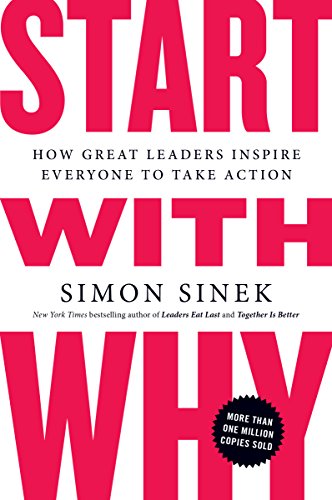

This article is an excerpt from the Shortform summary of "Start With Why" by Simon Sinek. Shortform has the world's best summaries of books you should be reading.
Like this article? Sign up for a free trial here .
Although there are thousands of successful companies and leaders, only a few ever really change the world. What makes these different from the rest? What’s the key to learning how to be an inspiring leader?
Inspiring leaders start with WHY – the vision and mission behind their efforts. Starting with WHY yields benefits like a more inspired team, more loyal customers, and enduring long-term success. We’ll cover how to be an inspiring leader by looking at the difference between energy and charisma. Learn how to discover your WHY and communicate it through your organization and to the outside world.
How to Be an Inspiring Leader: Martin Luther King, Jr.
Most applications in Start With Why focus on business, but the principle applies broadly to any area of life.
Dr. Martin Luther King Jr. wasn’t the first or only person participating in the civil rights movement of the 1960s. What made Dr. King stand out was his ability to inspire others. He knew that his voice wouldn’t be enough to change race relations in America. It would take thousands of average people to rally around a common cause. How did King learn how to be an inspiring leader?
His commitment to his ideals and his vision for a unified America is what brought 250,000 people to Washington D.C. to hear him deliver his “I Have a Dream” speech on August 28th, 1963. They weren’t invited and the speech wasn’t advertised. Dr. King’s vision inspired people to spread the word, build a movement, and change the nation. And it all started with Dr. King’s belief in his WHY. This is how to be an inspiring leader.
Inspiring Leaders: Energy Versus Charisma
Similar to volume vs amplification is the idea of energy vs charisma. While energy can motivate people, charisma is what truly inspires them. This is how to be an inspiring leader.
It’s easy to create energy within an organization through manipulations like bonuses or incentives. But charisma is what makes a leader or an organization great. Charisma has little to do with someone’s personality or physicality. Instead, charisma comes from clearly understanding your WHY and living it. This is magnetic – people are drawn to others who have a die-hard belief in a purpose greater than themselves. Emanating charisma is how to be an inspiring leader.
In other words, energy is short-term excitement, whereas charisma comes from knowing your WHY and working toward a goal bigger than yourself. Charisma inspires people, which creates loyalty.
Energy Versus Charisma: Steve Ballmer and Bill Gates
To see the difference between energy and charisma, let’s compare two former CEOs of Microsoft: Steve Ballmer and Bill Gates.
Steve Ballmer is known for being high energy. When he makes speeches, he’s enthusiastic–he often runs around the stage. (Shortform note: watch this video for some of Ballmer’s conference highlights.) And audiences respond to it! But energy alone isn’t enough to sustain a movement. It wears off.
Bill Gates, on the other hand, lacks Ballmer’s energy. He’s soft-spoken, but when he speaks, it’s with conviction. That’s because he knows his WHY and believes in it wholeheartedly. He saw a vision of a computer on every desk in every home, a WHY that resonated with his employees and customers. And today, with his work at the Gates Foundation, he has the admirable WHY of relieving as much human suffering as possible with the resources as his disposal.
So while Ballmer has energy, Gates has charisma. And that charisma comes from starting with WHY. This is how to be an inspiring leader.
———End of Preview———

Like what you just read? Read the rest of the world's best summary of "Start With Why" at Shortform . Learn the book's critical concepts in 20 minutes or less .
Here's what you'll find in our full Start With Why summary :
- What Steve Jobs did right compared to every other business leader
- How to define your organization's WHY
- How to help your organization avoid losing its edge as it succeeds






